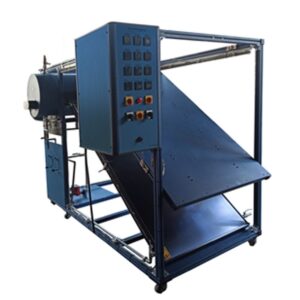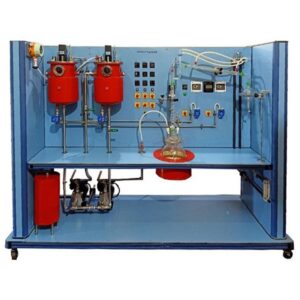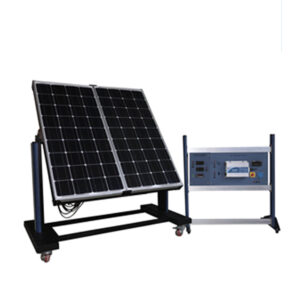Fuel cells are energy converters that, unlike heat engines, convert chemical energy directly into electrical energy. Heat is generated as a by-product during this process. The main component of this trainer is a polymer membrane fuel cell which is operated in combined heat and power generation. The system is supplied with high-purity hydrogen from a pressure vessel on the anode side and with oxygen from the ambient air on the cathode side.
The fuel cell is operated either current-regulated, voltage-regulated, or power-regulated via an integrated electronic load. The set point of the electronic load allows a precise adjustment of all operating points and a very accurate recording of characteristics. The technically usable thermal energy is dissipated to the environment via a cooling circuit and can be accounted for via integrated instrumentation. The water accruing during operation is collected in a water separator.
In the fuel cell’s dead-end mode, the accruing water is disposed of via a fully configurable purge valve for hydrogen. The system is operated via electronic controls. Auxiliary energy for the pump, fan, and control required for operation is provided from the mains. The moisture in the stack can be regulated via the operating temperatures and the supplied air flow so that no external humidification is required. All relevant measuring values are recorded to work out the fuel cell’s energy balance. The measured values are transmitted directly to a PC via DAQ System & software is included.




